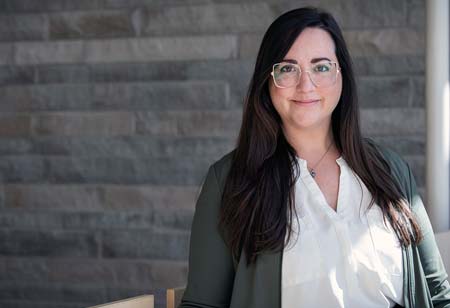Thank you for Subscribing to Healthcare Business Review Weekly Brief

Reflections on Oncology Pharmacy Practice in 2023
Healthcare Business Review
Pharmacy practice, like so many healthcare disciplines, is in a state of constant growth and progression. This wave is felt profoundly among those who work in the setting of oncology, where I have been fortunate to spend the last six years of my professional career as a leader.
Registered pharmacy technicians take center stage when it comes to the fundamental practice of hazardous sterile compounding. The complexities of this task have always been apparent, but Canada-wide adoption of the National Association of Pharmacy Regulatory Authorities Model Standards for hazardous sterile compounding has brought this specialty to the forefront. Meticulous aseptic technique and attention to detail remain the foundation, and areas such as integration of robotics, gravimetric analysis, and image capture workflow solutions allow this group of highly skilled pharmacy professionals to contribute their scope fully in the oncology practice setting. The razor-thin margin for error and responsibility to maintain the safety of patients, as well as staff, when it comes to hazardous sterile compounding is profoundly felt among my esteemed colleagues and is reflected in their demonstrated accountability and engagement to upholding best practice day in and day out.
Oncology pharmacists are not born; they’re made in the field. After six years of focused pharmacy education, I emerged, having been exposed to a one-course module on supportive care in cancer and a brief touch on hormones in breast cancer. Having entered the world of oncology and come to understand the profound depth and breadth of the subject matter, as well as the staggering rate at which new therapies emerge from the pipeline, I often wonder - How can this be?
Oncology pharmacists may be required to be specialists in up to a dozen disease site groups, manage complex malignant hematology cases, including acute leukemia, stem cell transplant, and CAR-T cell therapy, actively participate in oncology clinical trials and practice research, play a pivotal role in the management of oncology regimen computerized prescriber order entry systems, support complex public and private funding system management, have a strong understanding of sterile product stability and sterility, all while being compassionate, kind, and patient providers of education, information and support to patients and their families at their most vulnerable.
As I have slowly built my skill set and finally feel I can call myself an oncology pharmacist, I think I will be forever humbled by what I don't know while simultaneously proud of what I have the capacity to learn. My pharmacist colleagues and I lean on the strengths of each other as we learn and grow together, always motivated to keep going by the knowledge that our actions, large or small, may mean the world to a patient in need.
As I reflect on the stressors, the strains, the demands, and never-ending to-do lists, I have come to understand that the most important factor to the success of a team in oncology pharmacy practice is just that - the team. Automation, standards, and regulation are fundamental drivers, but some of the most important process improvement initiatives and innovations we have implemented in our program have come from the intrinsic motivation to do more, learn more, help more, and inspire more from my colleagues.
Oncology pharmacists are not born; they're made. In the field
I must recognize that oncology pharmacy practitioners are part of an immense system of healthcare providers and caregivers, all working toward a common goal of compassionate, patient and family-centered care. None of us can exist in isolation, and collaboration is key to being a well-oiled machine, but I feel strongly it’s important to take a moment to reflect and recognize pharmacy practitioners as a key ‘cog’ in this machine.
For all the pharmacy technicians and pharmacists who dedicate your heart and soul to this vocation, I see you. I thank you. Keep going.









